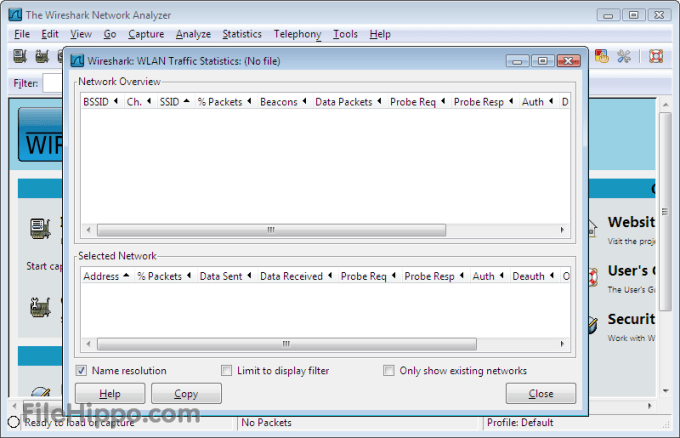with the advent of ipv6, these columns are hard to quickly identify with a particular system. I was wondering if there is an option to use the 'ethers' table, when an entry exists, in place of the ip address in either the source or destination columns? asked 17 Jul '13, 14:15 proj964 edited 18 Jul '13, 06:08 cmaynard ♦♦ |
Wireshark is the world’s foremost and widely-used network protocol analyzer. It lets you see what’s happening on your network at a microscopic level and is the de facto (and often de jure) standard across many commercial and non-profit enterprises, government agencies, and educational institutions. Download WireShark for Mac - A free and open-source network protocol protocol analyzer that enables you to capture the network traffic and analyze it in detail. Wireshark is a free/shareware packet sniffer (a follow-on to the earlier Ethereal packet sniffer) that runs on Windows, Linux/Unix, and Mac computers. The Wireshark labs below will allow you to explore many of the Internet most important protocols. We're making these Wireshark labs freely available to all (faculty, students, readers).

Wireshark Download For Windows 10

If you want to show the MAC addresses, or the names corresponding to the MAC addresses, in the columns in the packet summary, go to Edit -> Preferences, select 'Columns', and for the 'Source' and 'Destination' columns, select 'Hardware src addr' and 'Hardware dest addr', respectively. To get the addresses mapped to names, however, you'll have to add the names to the 'ethers' file; that will not happen automatically, except in cases where packets such as ARP packets, allowing Wireshark to infer the MAC address to IP address mapping and thus to translate the IP address to a host name, are in the capture. (No, Wireshark does not automatically map MAC addresses to host names.) This will, of course, not give useful information for packets that didn't originate and terminate on your LAN segment, but that are being routed through your network. answered 17 Jul '13, 23:03 Guy Harris ♦♦ |
The For this to work, you must:
Some example entries: answered 17 Jul '13, 20:04 cmaynard ♦♦ |


Wireshark Download Mac Os
Installing tshark Only. Note: If you have not used tshark before, you should install the wireshark package as above before limiting yourself to the CLI. If you want to install just tshark and no Qt/GUI components, this is possible on various linux distributions. The package is called tshark or wireshark-cli depending on the platform. Tshark: Terminal-based Wireshark D.3. Tcpdump: Capturing with “tcpdump” for viewing with Wireshark D.4. Dumpcap: Capturing with “dumpcap” for viewing with Wireshark D.5. Capinfos: Print information about capture files D.6. Rawshark: Dump and analyze network traffic. Editcap: Edit capture files D.8. Mergecap: Merging multiple.
Comments are closed.